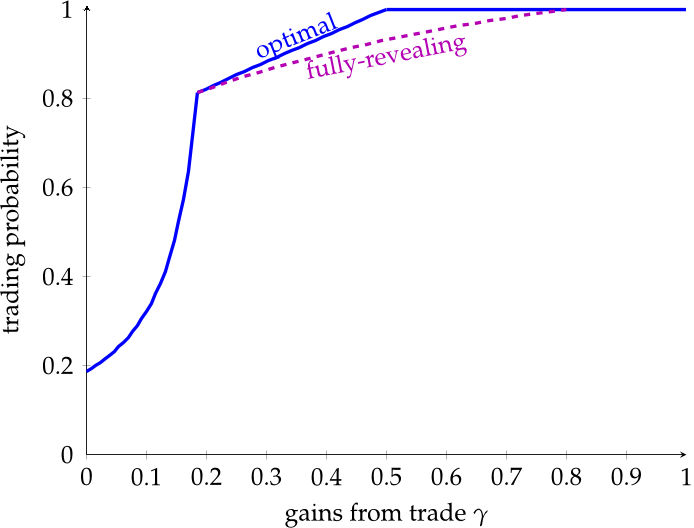Abstract: BARGAINING is usually interpreted as the process of arriving at mutual agreement on the provisions of a contract. In the economic realm, the prototype is exchange between a seller and a buyer of an item for money: the contract specifies the price paid for the item. In a wage negotiation, for instance, the union is the seller, the firm is the buyer, and if other terms of the contract are fixed, then the price is the base wage. In the legal realm, the prototype is disposition of a claim by a plaintiff against a defendant: the contract specifies the amount of the settlement, whereas failure to agree means proceeding to trial. Many damage suits, for instance, are settled by agreement on a payment from the defendant in exchange for the plaintiff's withdrawal of the claim; i.e., the defendant buys the claim from the plaintiff. The aggregate gain from trade in the case of exchange is the difference between the buyer's and the seller's valuation of the item; in the case of a damage suit, it is the sum of the parties' costs of a trial. These two prototypes of bilateral bargaining provide ample motivation for the topics discussed in this paper. In both economic and legal contexts, agreement may be delayed as the parties continue negotiations, or agreement might never be reached. Delay is usually costly, due to the opportunity costs of the parties' delayed receipt of their gains from trade and to expenses incurred during the process. Opportunity costs might be represented by lost production or forgone interest income; and expenses, by fees paid to brokers, attorneys, or other agents. Such costs loom large in prominent cases: corporate acquisitions, strikes by labor unions, and major civil suits. 1


